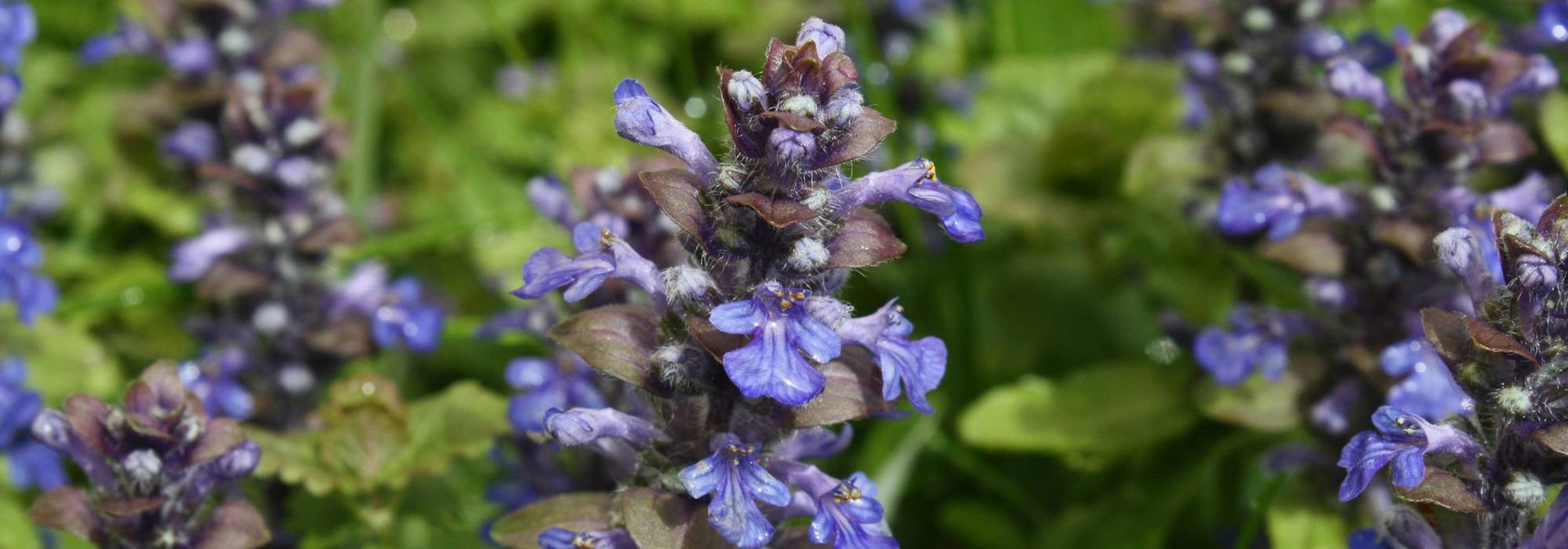
Ajuga : growing and care
Contents
Bugle in a nutshell
- It is an excellent evergreen perennial ground cover with green, bronze, or variegated foliage
- It is the essential perennial for heavy, cool soils
- Bugle quickly forms dense carpets of blue, pink, or white flowers depending on the varieties
- Easy to grow, very robust, and low maintenance, it prevents weeding!
- It brightens up all shaded corners, both woodlands and the cool slopes of rockeries, and it is stunning when it spills over from pots
A word from our expert
Discreet yet vigorous, the Bugle or Ajuga is one of the most interesting perennial ground cover plants for heavy soils, thanks to its lovely evergreen foliage in green, purplish bronze, or variegated, which brightens up the shaded and damp corners of the garden.
While it was once used for its medicinal properties, Bugle is now the essential plant for illuminating the shade of woodlands, borders, cool slopes of rockeries, and even containers.
Well established in cool or moist soil, Bugle quickly forms dense mats topped with very bright spikes of blue, pink, or white flowers depending on the variety. The most common in our gardens is the creeping Bugle (Ajuga reptans) and its numerous cultivars, such as the purple Ajuga ‘Atropurpurea’ and Ajuga ‘Black Scallop’, all valued for their abundant flowering from May to July.
Geneva Bugle (Ajuga genevensis), which forms a fairly tall tuft, and Pyramid Bugle (Ajuga pyramidalis) with blue, white, or purple spikes rising in a pyramid shape, are less common species but equally charming.
Easy to grow, low maintenance, and very hardy, Bugle avoids weeding and can even effectively replace grass in cool spots!
Fall in love with our Bugles, strong and beautiful even in winter, they won’t disappoint you!
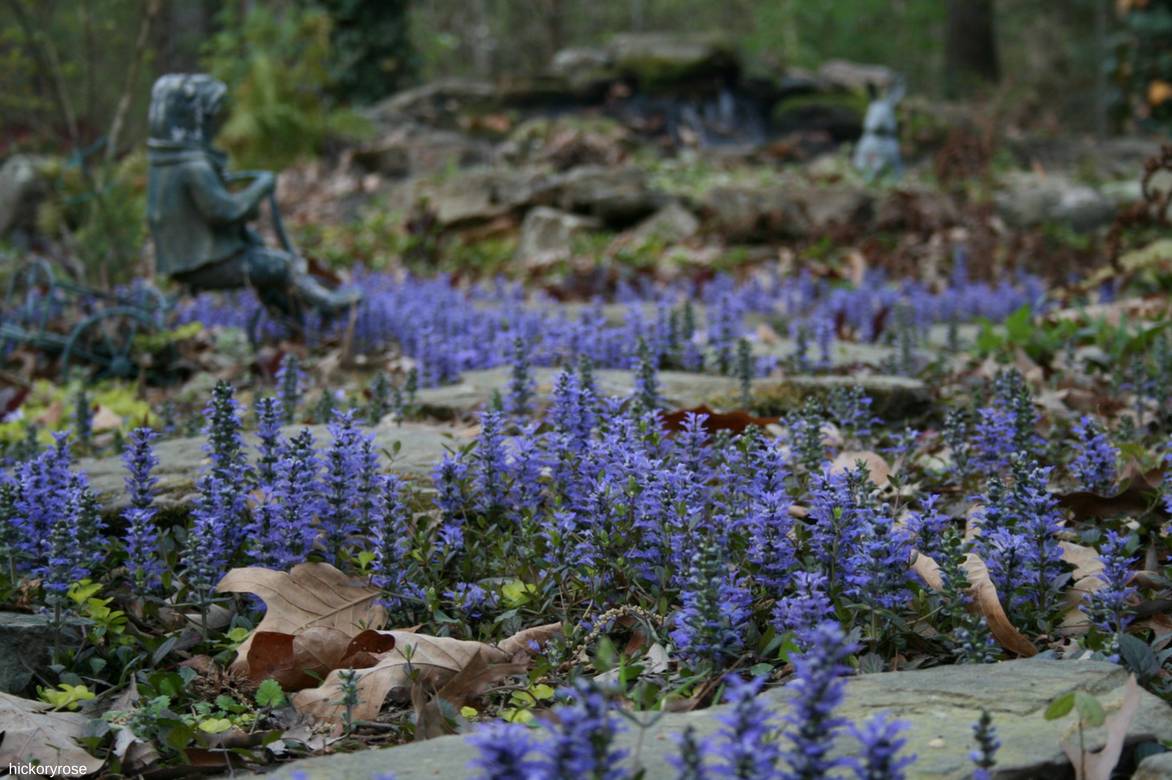
Bugles form colourful mats in spring.
Description and botany
Botanical data
- Latin name Ajuga
- Family Lamiaceae
- Common name Bugle
- Height 5 to 30 cm
- Exposure Sun, partial shade, shade
- Soil type All, cool, well-drained
- Hardiness -15°C-20°C
Bugle (Ajuga) is a perennial ground cover from the vast family of Lamiaceae, which includes mint, sage, and lavender. It grows wild in woods, at the edges of mountain undergrowth, in wet meadows, and in shaded, temperate areas of Europe, particularly in the Caucasus and Iran. It is widespread in the cool, shaded habitats of our regions but becomes rarer on the Mediterranean coast, where it fears the sun’s bite as much as drought.
There are about forty species, the most common being creeping Bugle (Ajuga reptans), from which dozens of cultivars have been developed, such as ‘Black Scallop’ with its almost black chocolate bronze leaves, ‘Alba’ with white flowers, ‘Multicolor’ (‘Rainbow’), and ‘Burgundy Glow’ with variegated foliage. Also found is Ajuga genevensis, or Geneva Bugle, a taller species, and the pyramidal Bugle (Ajuga pyramidalis) with blue flowers that rise in pyramids.
Ajuga insica, also known as incised Bugle, is a species with strongly incised foliage, rarer in our gardens. Occasionally, Ajuga tenorii, an interesting hybrid variety, can be found, which is compact and sturdy.
Most bugles, particularly creeping Bugle, spread quickly as a dense ground cover, using leafy stolons that root in place, much like strawberries, generating new plants in multiple directions. Ajuga genevensis and Ajuga pyramidalis are non-stoloniferous.
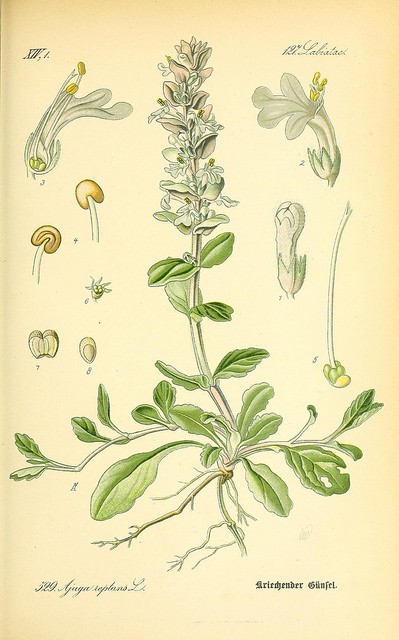
Ajuga reptans – botanical illustration
It produces rosettes of evergreen to semi-evergreen leaves, depending on the severity of winter, reaching a height of 10 to 45 cm at maturity. The plant eventually forms a spreading tuft with a more or less compact habit, capable of covering up to 50 cm in diameter at a minimum. In pots, its habit will be semi-trailing. The bugle is theoretically capable of spreading indefinitely, persisting for many years in place; it can become slightly invasive; fortunately, its wandering stolons are easily controllable!
Creeping Bugle is one of those perennial plants characterised by a particularly remarkable foliage. Evergreen, it allows the garden to be dressed even in winter.
The leaves, measuring 5 to 12 cm long, are opposite or entire, rounded to oblong, long-petiolate, very glossy or downy, sometimes slightly dentate, wrinkled, and so veined that they appear crisped. They become shorter and rarer towards the tips of the stems.
Their colour varies from one cultivar to another, ranging from dark green to deep bronze-purple with slightly metallic reflections, including variegated forms. Among the notable cultivars, ‘Variegata’ stands out with irregularly cream-margined grey-green leaves, ‘Atropurpurea’ with a rosy bronze hue, ‘Black Scallop’ with particularly dark chocolate bronze foliage, while ‘Catlin’s Giant’ features giant leaves that are bright green with bronze reflections, and Ajuga reptans ‘Rainbow’ (or ‘Multicolor’) offers already well-variegated foliage, evolving through the seasons from dark green mixed with purple and bright pink edged with cream.
The Ajuga reptans ‘Burgundy Glow’ has green foliage variegated with red. ‘Golden Glow’ is undoubtedly the brightest of the bugles, with its leaves splashed with yellow-cream, pink, purple, and mint green.
In spring, from May to July, beautiful inflorescences in short whorled spikes emerge from this mass of small leaves, sometimes reaching up to 30 cm above the foliage. The tiny two-lipped flowers are interspersed along the stems, at the axil of bracts resembling small leaves. In Ajuga pyramidalis, the flowers rise in curious dense pyramidal spikes.
Often bright blue to pale violet blue, light blue, or gentian, these clusters are pink in Ajuga reptans ‘Purple Torch’ and pure white in Ajuga reptans ‘Alba’.

Bugles display several colours: Ajuga reptans ‘Black Scallop’, Ajuga reptans Purple Torch, Ajuga reptans ‘Burgundy Glow’, Ajuga reptans ‘Sanne’, Ajuga incisa ‘Frosted Jade’.
The flowers bloom for more than a month and are nectariferous, attracting bumblebees, bees, and butterflies. They then produce small seeds that rarely germinate.
With good hardiness, the Bugle does not fear the cold and can withstand negative temperatures down to -15-20°C. Tolerant of soil type, it is a plant easy to grow in cool partial shade or dappled sunlight, in any soil that remains cool in summer. It is a shade to partial shade plant that dreads overly hot exposures.
The bugle is among the best ground-cover perennials: it is essential for dressing the base of trees and bushes, in shaded borders, in cool rockeries, or even in pots from which it will willingly overflow!
Long known as “Little comfrey” or “Saint Laurent’s herb”, the Bugle is renowned as a medicinal plant. In the Middle Ages, it was used as a poultice to treat wounds, haemorrhages, and heart troubles. It is still used today in homeopathy.

Most bugles have decorative leaves: Ajuga reptans ‘Black Scallop’, Ajuga incisa ‘Frosted Jade’, Ajuga ‘Burgundy Glow’, Ajuga reptans.
Main species and varieties
The genus consists of around forty species among which the most common, Ajuga reptans or Creeping Bugle and its must-have cultivars such as ‘Black Scallop’, ‘Atropurpurea’, ‘Catlin’s Giant’, and ‘Multicolor’, the Geneva Bugle (Ajuga genevensis) which is taller (40 cm), and the Pyramid Bugle (Ajuga pyramidalis). The Ajuga tenorii are interesting hybrids, compact and vigorous. Varieties with atypical foliage (‘Golden Glow’) are somewhat less vigorous than the classic varieties.
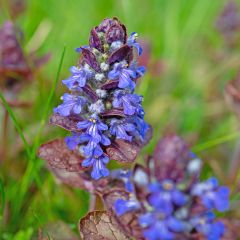
Ajuga reptans Atropurpurea
- Flowering time June to August
- Height at maturity 15 cm
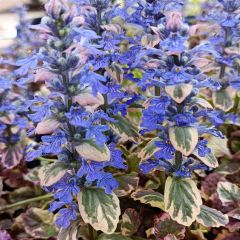
Ajuga reptans Burgundy Glow
- Flowering time June to August
- Height at maturity 15 cm
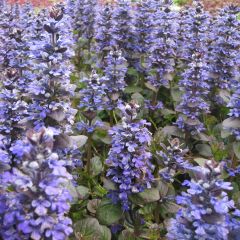
Ajuga reptans Catlins Giant
- Flowering time June, July
- Height at maturity 30 cm
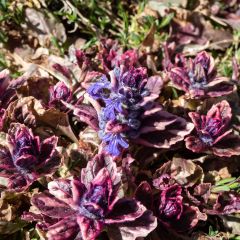
Ajuga reptans Multicolor - Rainbow
- Flowering time July to September
- Height at maturity 15 cm

Ajuga reptans Variegata
- Flowering time June to August
- Height at maturity 20 cm
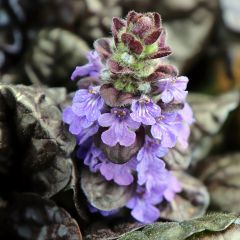
Ajuga reptans Black Scallop
- Flowering time July, August
- Height at maturity 20 cm
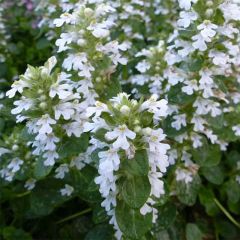
Ajuga reptans 'Alba'
- Flowering time June, July
- Height at maturity 25 cm
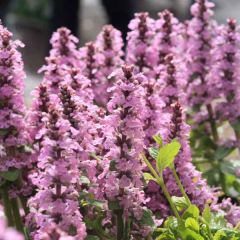
Ajuga reptans Purple Torch
- Flowering time June, July
- Height at maturity 15 cm
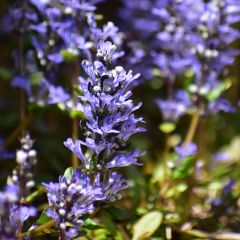
Ajuga x tenorii Chocolate Chip
- Flowering time June, July
- Height at maturity 8 cm
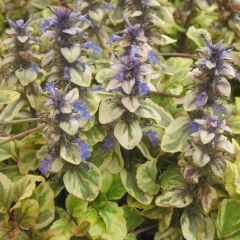
Ajuga reptans Golden Glow
- Flowering time June, July
- Height at maturity 15 cm
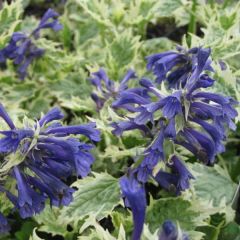
Ajuga incisa Frosted Jade
- Flowering time June, July
- Height at maturity 40 cm
Discover other Ajuga
View all →Available in 2 sizes
Available in 2 sizes
Available in 2 sizes
Available in 1 sizes
Available in 2 sizes
Available in 1 sizes
Available in 3 sizes
Available in 2 sizes
Available in 1 sizes
Available in 2 sizes
Planting Ajuga
Where to plant bugle?
Bugle or Ajuga is a easy to care for perennial, better resistant to cold (sometimes down to -20°C) than to drought. The foliage may suffer and disappear in the event of severe frosts, but it will reappear as winter ends. This plant, which cannot tolerate a lack of water, proves difficult in Mediterranean climate, which is too dry and hot in summer. What this ground cover, native to grassy meadows and cool areas, prefers is a soil that remains consistently cool, especially in summer (but not waterlogged). Some species, like the Geneva bugle, can tolerate occasional drought.
Bugle appreciates shade and partial shade and coolness but will tolerate gentle sun in regions north of the Loire. It even flowers in dense shade but will, however, fear scorching exposures that could scorch its beautiful foliage.
It tolerates all types of drained soils, including heavy ones, from the poorest to the richest, provided it does not lack water in summer. It will thrive more in soil rich in humus.
Bugle truly shines as a woodland plant; its foliage develops more quickly when the plant is grown in a partially shaded and cool spot in summer. It will quickly occupy the space available to it, even exceeding the limits set for it. The clumps grow larger over time but remain easy to control.
It is a useful ground cover that helps limit the proliferation of weeds in less accessible or lightly trodden areas of the garden. Some varieties can tolerate occasional foot traffic and can be mowed like a lawn after flowering.
In open ground, it is appreciated for its unique qualities as a ground cover, in woodland to dress shaded areas, on shaded slopes, along streams, to quickly colonise shrub beds even in winter, or simply to crown a low wall. The Bugle is also very valuable for creating window boxes, pots, bowls, or hanging baskets from which it will willingly escape.

Collar of Ajuga reptans ‘Black Scallop’.
When to plant bugle?
Plant Bugle or Ajuga in autumn from September to November or in spring from March to April, outside of frost and drought periods. Planting in autumn encourages rooting during winter.
How to plant bugles?
In open ground
Space the plants about 30 to 50 cm apart and count 5 plants per m2 to create a beautiful dense carpet. You can also plant creeping bugles in large masses: their spreading ability can be useful for colonising a neglected corner of the garden, under trees or hedges, or replacing the lawn in less frequented areas. They adapt to the most ungrateful locations.
- Dig a hole 3 to 5 times wider than the root ball
- In poor soils, incorporate compost or potting soil into the planting hole
- Place the plant in the centre of the hole
- Cover the root ball with a mixture of good potting soil, ordinary garden soil, and a handful of compost
- Firm down
- Water generously and then regularly until it takes hold
Maintenance and care
Bugle is not delicate and requires little care as long as the growing conditions are suitable.
In pots as well as in the ground, you must ensure it maintains sufficient moisture at the base, especially in summer. The soil should be kept cool enough, or you may see its foliage curl and this vigorous perennial decline in the event of prolonged drought. If it doesn’t rain, water regularly during the first year after planting, then 1 to 2 times a week during hot weather.
In poor soil, add a little compost at the base of the plants each spring.
Watch out for slugs and snails: follow our advice to protect its young foliage in spring!
In large spaces, mow in summer after flowering; this will help to thicken the tapet.
In autumn or at the end of winter, if you wish to limit its spread, remove the excess stolons. Divide every 2-3 years to maintain the plant’s vigour.
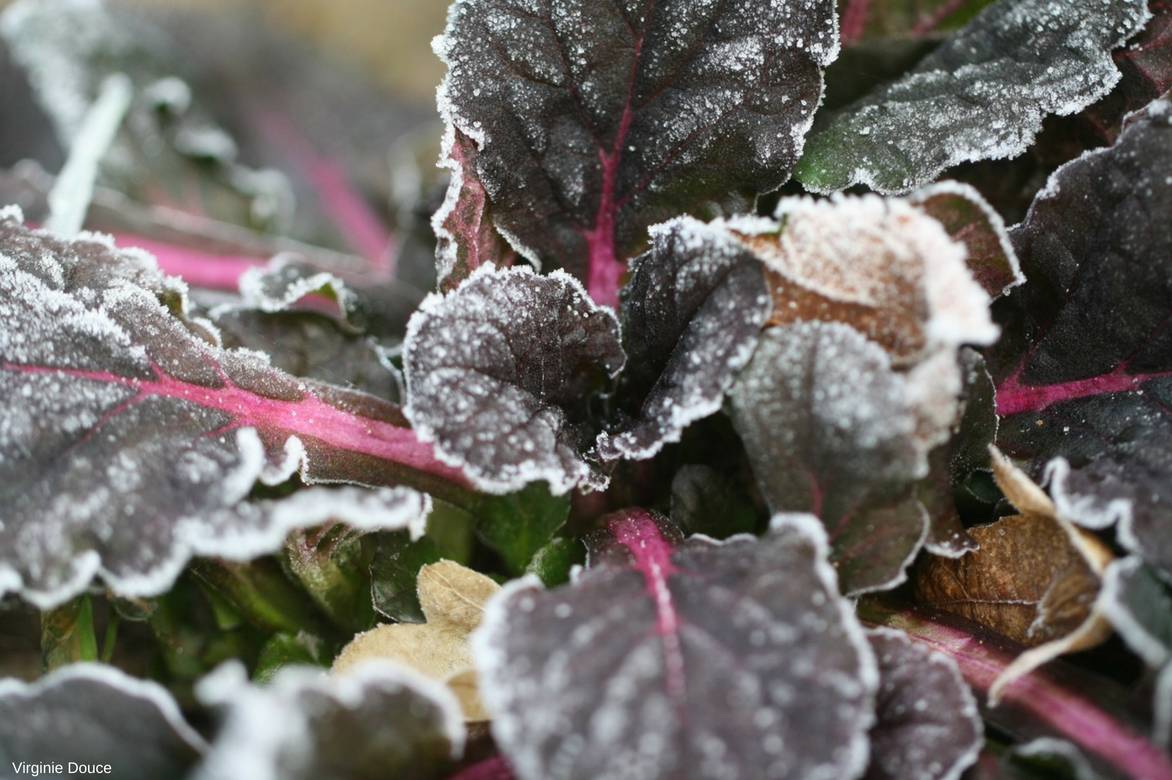
The foliage of this Ajuga reptans ‘Black Scallop’ is enhanced by frost in winter.
Diseases and potential pests
The foliage of Bugle is relatively sensitive to powdery mildew. As a preventive measure: space your plantings well, as this is the best way to keep powdery mildew at bay!
In case of an attack, remove the leaves of the affected plants, and to learn more, consult our guide: How to treat and prevent powdery mildew or white disease?
Multiplication
In spring or autumn, Ajuga easily multiplies by clump division or by detaching rooted runners.
Clump division
- At the end of winter, use a fork to lift part of the stump
- Divide it into several sections, each with a few roots and a shoot of leaves
- Replant the sections immediately in the ground or in pots
Separating runners from Bugle
- In spring or late summer, with a spade, separate a stem connected to the mother plant
- Unearth the runner
- Replant immediately in moist soil; it will quickly produce some roots
Associate bugle in the garden
Bugle is an essential plant for shade gardens, where its evergreen foliage in vibrant, dark, or variegated hues and inflorescences brighten up cool areas and slightly neglected corners. It is ideal for beautifully filling the space at the base of trees and bushes, in shaded borders, on a slope, or in a cool rockery.
Under trees, bugles are welcome among other ground-cover perennials for shade to create a carpet of subtle colours and textures, such as heucheras, Caucasian forget-me-nots, Acaena, hardy geraniums for shade, Asarum, and Vinca minor.
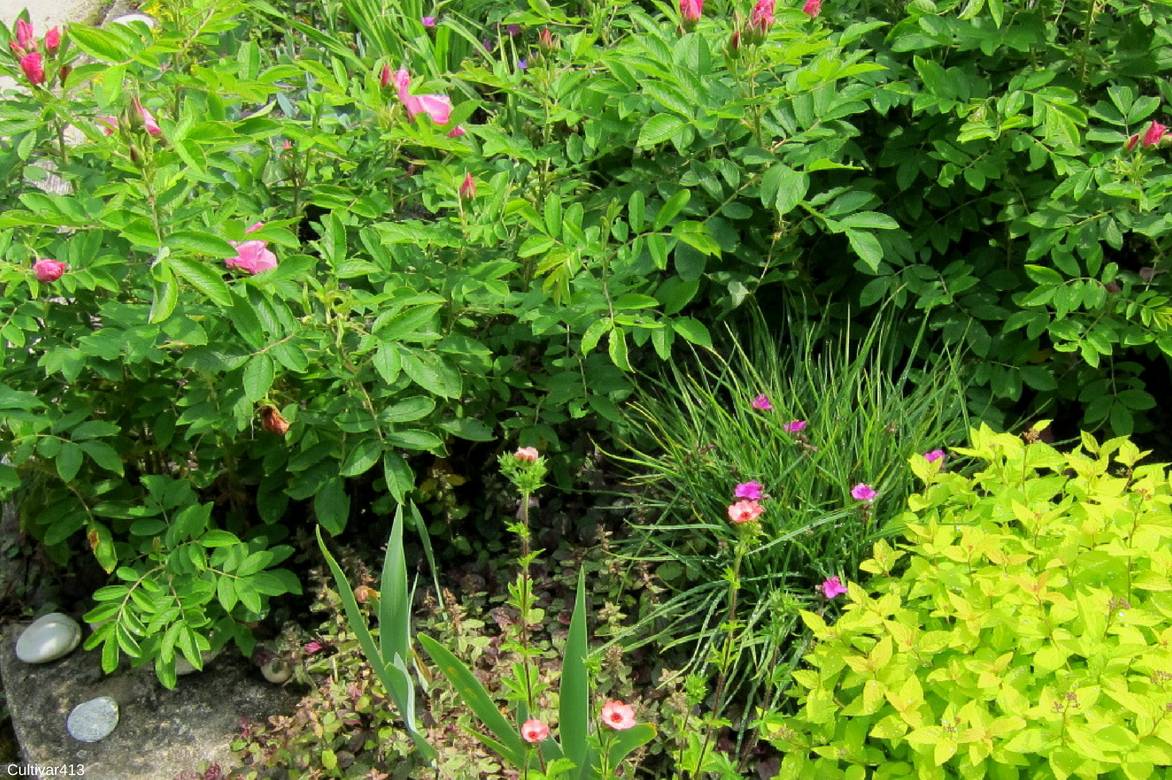
An example of association: Rosa rugosa ‘Monte Rosa’, Potentilla ‘Hopwoodiana’, Tradescantia ‘Satin Doll’, Spiraea ‘Lemon Queen’, Ajuga reptans ‘Renick’ (a variety close to Ajuga ‘Atropurpurea’).
In a cool rockery, they will easily find their place alongside saxifrages and Lamiers with colourful foliage.
They create a classic and fresh tableau with many spring bulbs such as snowdrops, hyacinths, late-flowering daffodils, crocuses, and later, autumn colchicums.
In a fresh border, they are good companions for hostas, heathers, and alchemillas.
They form beautiful cushions at the base of larger plants, such as peonies, roses, or even golden ‘Aurea’ or purple Lysimachia.
The varieties with variegated foliage (‘Variegata’) will create a very bright carpet of cream-white and green, contrasting perfectly with the vivid or fuchsia roses of bergenias, Dicentra, and Japanese primroses.
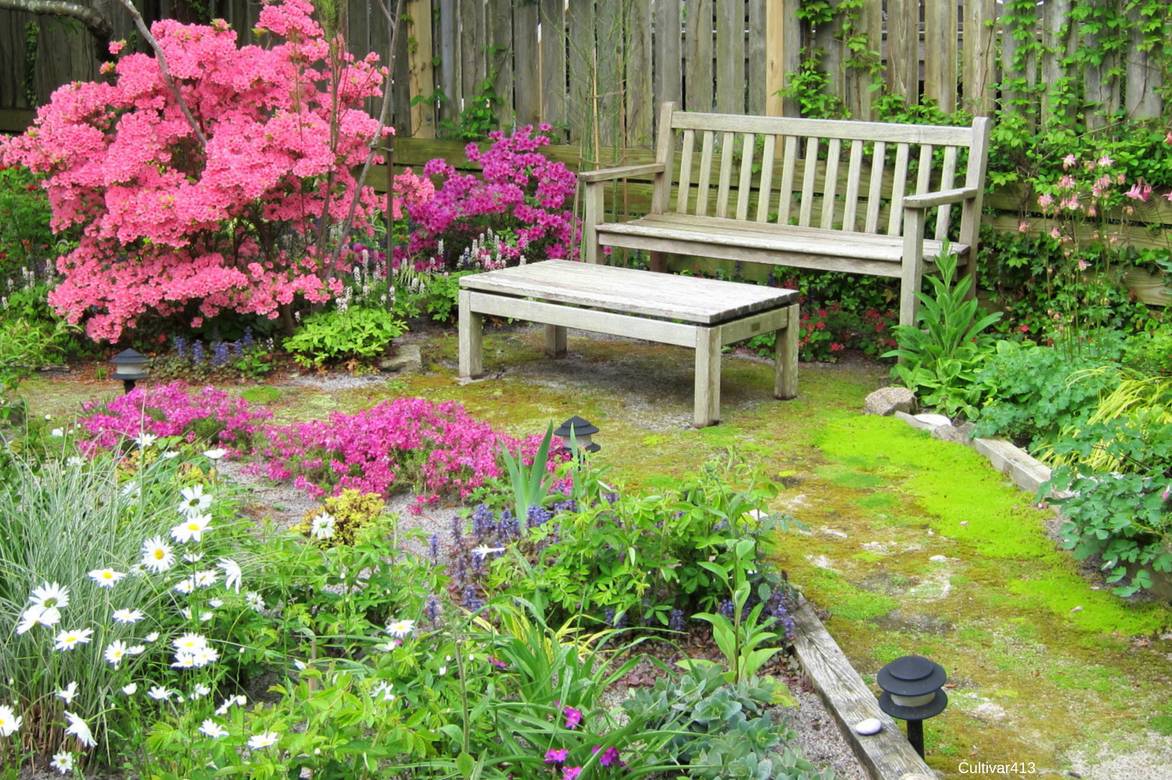
An example of association: Leucanthemum vulgare, Tradescantia, Phlox subulata ‘Scarlet Flame’, Ajuga, Tiarella ‘Spring Symphony’, Azalea ‘Kirin’ and ‘Herbert’, Aquilegia vulgaris.
Cultivars with dark bronze foliage like ‘Atropurpurea’ and ‘Black Scallop’ will provide a sumptuous backdrop to the blue-green foliage of Hebe, and to brighter flowers with more defined shapes like Symphytum, elegantly enhancing the flowers of Hellebores, sweet woodruff, and elf flowers (Epimedium). They will be essential in a composition “All black”.
Their beautiful reddish-bronze leaves harmonise with a wide range of late-colouring trees and shrubs such as maples, barberries, and deciduous euonymus, and grasses with autumn hues like Pennisetum setaceum ‘Rubrum’ and Miscanthus sinensis ‘Little Miss’.
In pots, Bugle pairs well with alyssum, bellflowers, daffodils in spring, and cyclamen in winter.
→ More examples of association with Ajuga in our article.
Useful resources
- Discover our wide range of Bugle plants: a selection of the best varieties
- What is a good ground cover as an alternative to lawn?
- What to plant under my trees?
- What are the best plants to grow in woodland?
- Our article: How to choose an ajuga?
- Our article: How to associate ajuga?
- Our article: Growing bugloss in pots
- Our article: Bugloss, Anchusa: 5 ideas for associations
- Subscribe!
- Contents
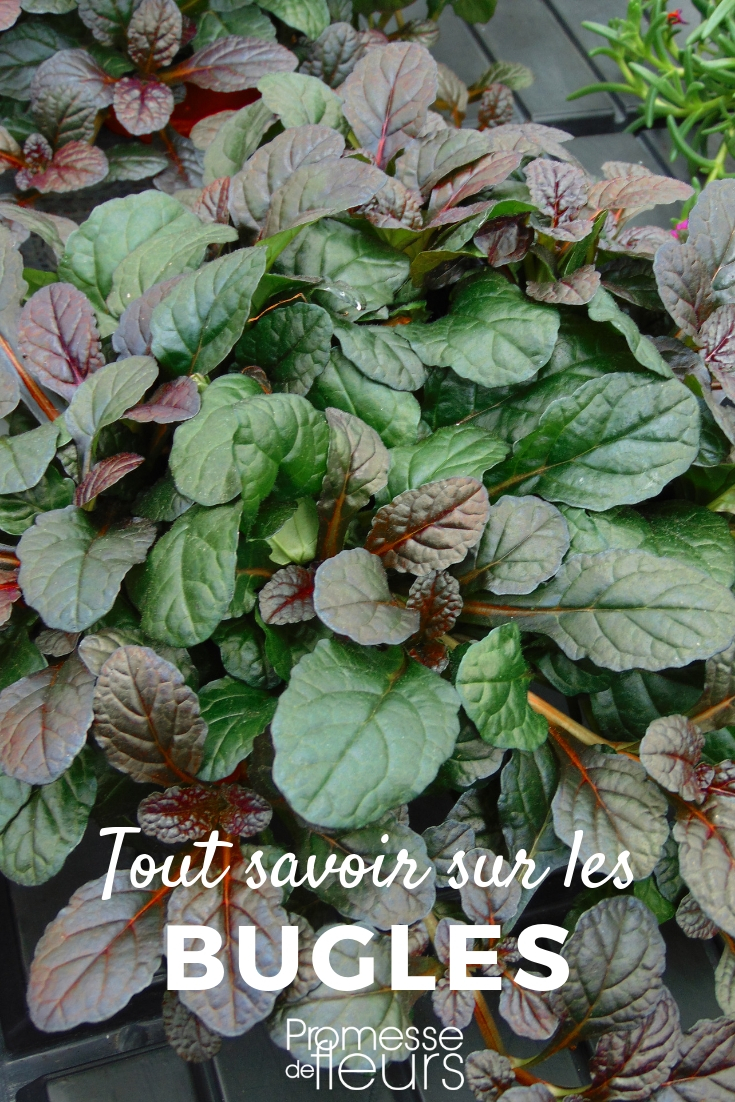































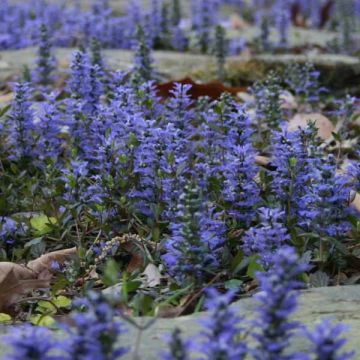
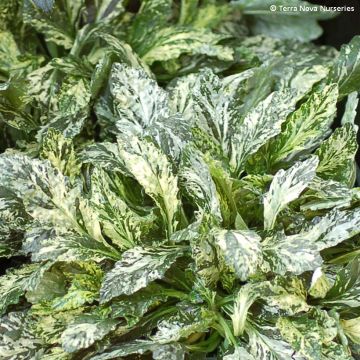

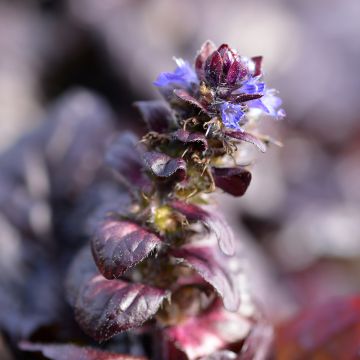
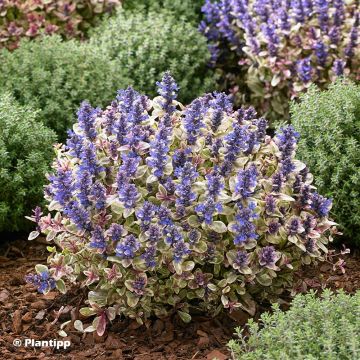
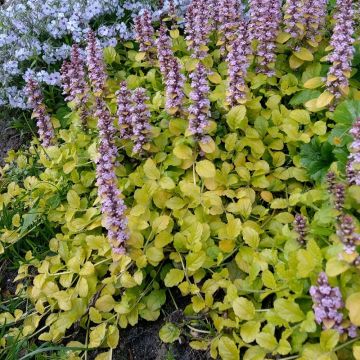


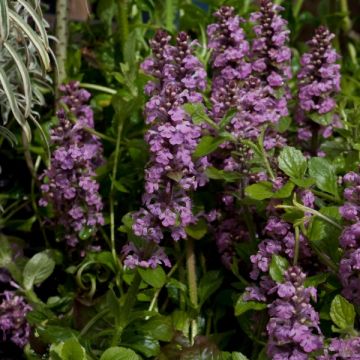

Comments